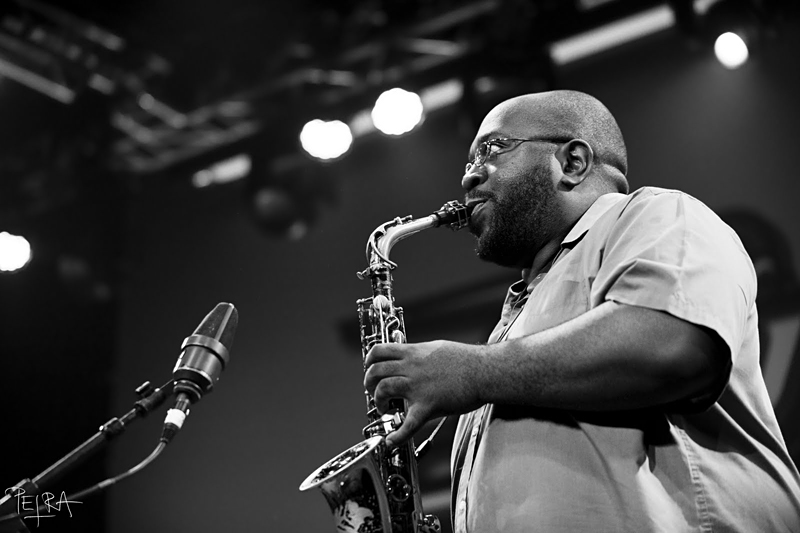WHAT STARTED in the streets will end in the courthouse. WTO protesters who were subject to mass arrest, pepper spraying, rubber bullets, and wave after wave of tear gas a year ago are striking back at the city of Seattle—with help from civil liberties advocates and some enterprising trial lawyers. Depending on what happens at this week’s N30 first anniversary marches, there may also be a few more broken elbows and First Amendment breaches to shout about.
One major class-action lawsuit stemming from last year’s events is already under way; the ACLU has launched another suit. Mayor Schell’s refusal this week to allow WTO protesters to gather at Westlake Park, where downtown merchants have their annual holiday carousel, could provide further legal ammunition for the claim that city leaders are engaged in an unconstitutional effort to smother speech that they don’t like.
WTO activists have also organized a Mass Filing demonstration for this Friday in which they will deliver an armload of new damage claims to the city. According to Ruth LaRocque, spokesperson for the city attorney’s office, the city has already received some 84 claims arising out of WTO (only one of which has been paid: The Seattle Post-Intelligencer got money back for some confiscated gas masks). A few of these claims have escalated into lawsuits, though many are too small to interest any lawyer.
Activists want to see as many claims as possible lodged so as to send a message to the city about its treatment of peaceful protesters. Says organizer Erica Kay: “It was inappropriate then, and it is inappropriate now.” The Mass Filing is being preceded by three evening “clinics” at Seattle U in which WTO survivors are getting encouragement and advice from local attorneys on how to fill out the city’s claim form. (The final clinic is the evening of Wednesday the 29th in room 103 of the Piggot building.)
The point of the Mass Filing effort, says Kay, “is not that people need to be paid, but that the city needs to be held accountable. Some people will file claims for physical injuries, some for property that was taken and never returned. Some people were made sick and had to go to a doctor. For a lot of people it’s issues of speech. The filing is for whatever damages people feel the city is responsible for. As with the protests themselves, it’s a mishmash of tactics and ideas.”
SENDING A MESSAGE is very nice, of course. But the potentially lucrative WTO spoils have also set off some jockeying among local attorneys.
The first WTO-related class-action suit got thrown out of US District Court this summer when a judge ruled that the attorneys bringing the suit hadn’t clearly defined the class of people they were representing. “It was far too broad,” says civil rights lawyer Fred Diamondstone, who actually went to court to argue against “certification” of the suit. “[It tried to encompass] everyone who suffered ill effects from the conduct of the city. I didn’t believe the lawyers involved had sufficient background and resources to handle [the case]. I didn’t want my clients to suffer from it.”
John Scannell, who helped lead the initial action, admits that other local lawyers “think we’re tilting at windmills” by trying to include every aggrieved party. But, as he points out, “It’s hard to make any money off four people breathing tear gas.” The four named plaintiffs in his case ultimately came away with $2,500 settlements from the city—which were hard to turn down, Scannell says, since “if we can’t beat that $2,500 award [at trial], then we have to pay legal fees.”
Meantime, Diamondstone, along with a half-dozen other top local litigators, has joined a new class-action complaint focused on just those people who were arrested. “You can identify and know who those people are,” notes Diamondstone. The suit is being led by Steve Berman, arguably the most experienced and controversial class-action lawyer in town, who has a history of taking on big corporate targets, though not always successfully.
The suit alleges that Seattle government “engaged in a concerted and illegal effort to stifle free speech and assembly” when the mayor put in place the so-called “no-protest” zone, prohibiting demonstrators from entering a 24-block section of downtown. The suit seeks “compensatory damages” for the hundreds of people who were arrested both inside and outside the zone.
Seattle City Attorney Mark Sidran was not available to comment on the lawsuit. But in the city’s only court filing in the case, Sidran and his legal team “deny that WTO demonstrators had an unconditionally unfettered right to conduct their planned assemblies and voice their opinions.” And they argue, “Some limitations on speech are permissible under certain circumstances.”
THE “NO PROTEST” policy was put into effect on December 1, after protesters managed to shut down the first day of WTO negotiations and trap visiting dignitaries in their hotels. The order was technically described as a “limited curfew” policy: It prohibited anyone from entering the center of downtown except for those with WTO credentials and people who lived or worked in the area.
But in practice, argues ACLU attorney Aaron Caplan, the order “was selectively silencing people on the basis of their political opinions.” Even people who had WTO passes or who had jobs in the area were arrested and harassed if they carried signs, buttons, or even just spoke out. So while the order did not explicitly prohibit dissent, Caplan says, “I think we’ll have no difficulty proving that what was going on on the ground was an attempt to silence WTO protest. Those were exactly the words that came out of officers’ mouths: ‘Hey, this is a no-protest zone!'”
Caplan says the government can limit access to an area based on whether or not people have a pass. “But the city could never set up an area where the ability of a person to enter is dependent on their speech plans. You can’t have a situation where if I’m going to Nordstrom to buy Christmas presents, it’s OK but if I’m going to protest fur, it’s not OK.”
“Certainly, there was a need for security around the Convention Center,” he says. But the key is that any government restrictions have to be “narrowly tailored.” Earlier this year, for example, the US Supreme Court upheld a Colorado law that required abortion protesters to remain outside a buffer surrounding family planning clinics. But that “no-protest zone” was only 8 feet wide, not 24 blocks.
Three of the ACLU’s seven original plaintiffs have already settled with the city for $5,000 each. The rest are scheduled for trial next August.
But Doug Honig of the ACLU says he “wouldn’t want to create the impression that the main way WTO is being addressed is through lawsuits. We have a whole series of recommendations that we expect the City Council will be taking up, such as police standards for crowd control.”
After this week’s activities, those recommendations may need some revising. But in which direction?








